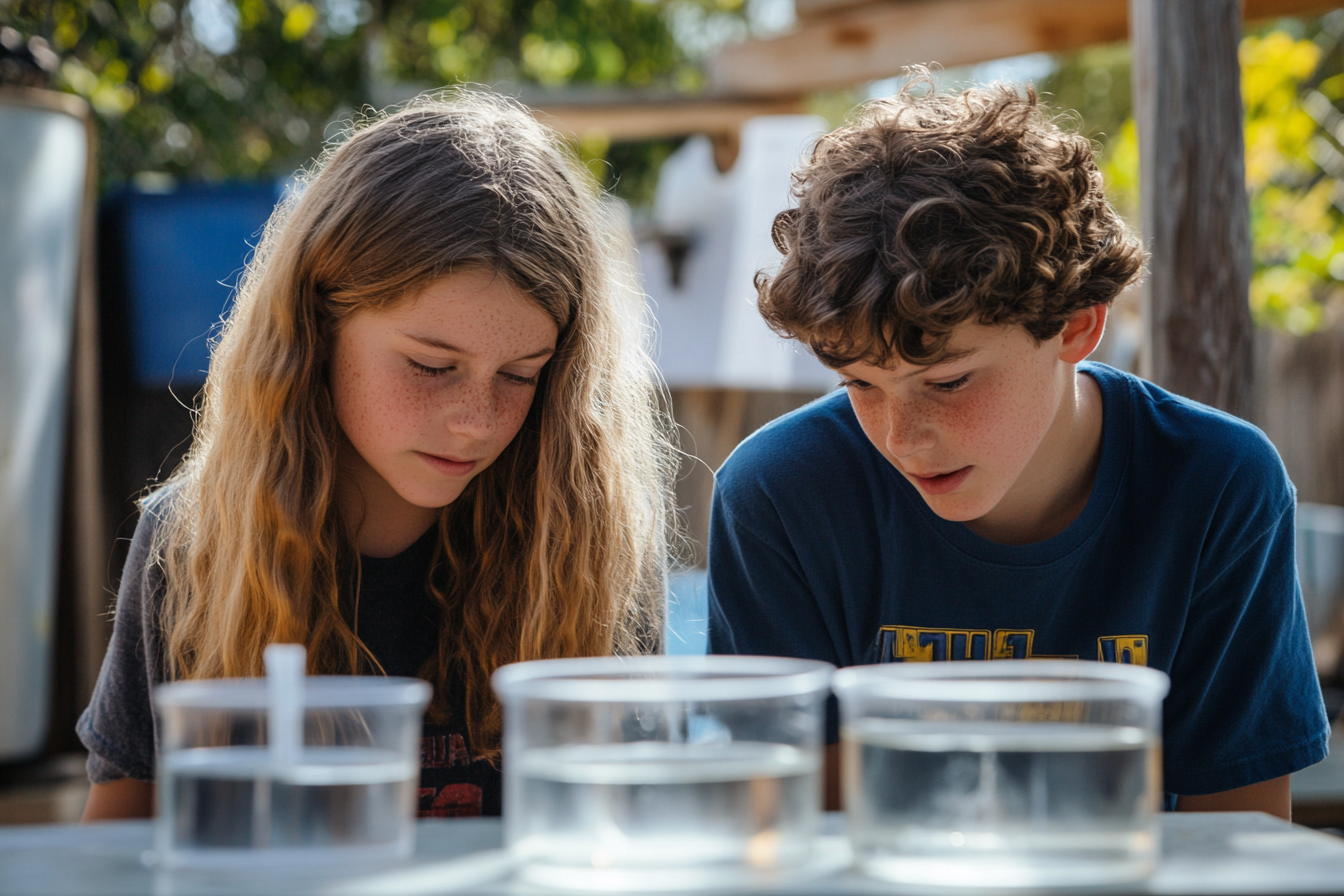Lesson Plan (Grades 6–8): Solar-Powered Water Purifier – Designing a Mini Solar Still to Clean Water
STEM lesson for grades 6-8: build a solar-powered mini water purifier, analyze results, and explore clean-water engineering with a solar still.

Lesson Title: Solar-Powered Water Purifier – Designing a Mini Solar Still to Clean Water
Grade Level: Grades 6–8
Subject Area: Science (Energy & Phase Changes) / Environmental Science / Engineering Design
Overview Access to clean water is one of the world’s greatest challenges. In this immersive, multi-session STEM lesson, students assume the role of environmental engineers charged with designing, constructing, and testing a miniature solar still: a passive device that uses solar energy to evaporate contaminated water and then condense and collect pure water. Working collaboratively, learners will use clear plastic sheeting, dark-colored basins, condensation “gutters” (black tubing), and simple framing materials to assemble and optimize their solar stills. They’ll evaluate performance by measuring water yield, salinity (with refractometers or conductivity probes), and turbidity (with Secchi tubes or turbidity meters) before and after purification. Through hands-on construction, systematic data collection, and evidence-based analysis, students will explore fundamental concepts—solar thermal energy, phase changes (evaporation and condensation), the water cycle—and gain real-world insights into sustainable water treatment solutions.
Objectives and Standards
Learning Objectives
- Energy Transformation: Describe how solar radiation is absorbed by dark surfaces and converted into heat that drives water evaporation.
- Phase Change Processes: Explain the mechanisms of evaporation (liquid to vapor) and condensation (vapor to liquid) within a solar still.
- Engineering Design: Apply the engineering design cycle—ask, imagine, plan, create, test, and improve—to develop a functional mini solar still.
- Quantitative Analysis: Measure and compare salinity and turbidity of water samples before and after purification, using appropriate scientific tools.
- Data Interpretation: Record, graph, and interpret data—daily water yields, temperature readings, and quality metrics—to determine device effectiveness.
- Global Relevance: Connect lessons learned to large-scale solar desalination applications and discuss the importance of clean water access in off-grid communities.
Standards Alignment
- Next Generation Science Standards (NGSS)
- MS-PS3-3: Apply scientific principles to design, construct, and test a device that converts energy from one form to another (solar to thermal).
- MS-ESS3-3: Apply scientific principles to design a method for monitoring and minimizing human impact on the environment (clean water generation).
- Common Core State Standards – Mathematics
- 6.SP.B.5: Summarize numerical data sets in relation to their context (calculating average daily water yield, reductions in salinity/turbidity).
- 7.RP.A.2: Recognize and represent proportional relationships between quantities (e.g., basin area vs. water collected).
- NGSS Crosscutting Concepts
- Energy and Matter: Tracking energy flow from sunlight into thermal energy and matter cycling in water phase changes.
- Structure and Function: Analyzing how design elements (plastic angle, basin color, seal integrity) affect solar still performance.
